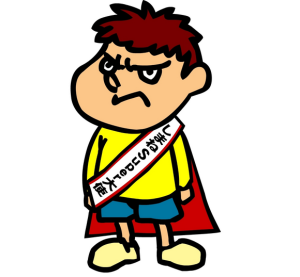JQ Magazine: JQ&A with Tom Byer on Life in Soccer, Japan
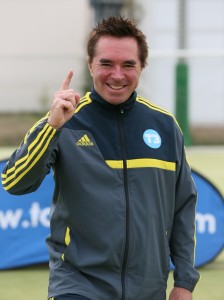
“I believe we may see Japan win a World Cup within my lifetime, and I certainly think they will be the first Asian team to do so. They are the type of team that the current world powers would not like to have in their group during a WC tournament.” (Courtesy of K.K. T3)
By Lyle Sylvander (Yokohama-shi, 2001-02) for JQ magazine. Lyle has completed a master’s program at the School of International and Public Affairs at Columbia University and has been writing for the JET Alumni Association of New York since 2004. He is also the goalkeeper for FC Japan, a New York City-based soccer team.
Tom Byer (a.k.a. Tomsan) is an American soccer coach who has lived in Japan for nearly 30 years. The first professional American soccer player in Asia, he has been a major figure in Japan as a coach and educator. In fact, many people in Japan see him as a major catalyst behind the country’s rising status as a global soccer power. Byer is responsible for increasing soccer’s popularity and teaching fundamental skills to hundreds of thousands of children, including many of the nation’s most celebrated players. In the process, he has become a well-known media personality and has even extended his influence to China, where he signed a contract with the Chinese Football Association to be a technical director for youth teams.
Where are you from? Was soccer popular there when you were growing up?
I was born in the Bronx, New York City. I grew up in Rosendale, Ulster County, Upstate New York. Soccer was just becoming popular when I was a kid. I first started playing baseball and changed over to soccer after my brother and his friends started to play. But soccer was still a very minor sport.
How did you end up living and working in Japan?
I was introduced to Hitachi FC, which is currently playing in the J-League as Kashiwa Reysol, back in 1986 because my college coach at Ulster County Community College had some connections here. So I had a short stint with them, which gave me experience in Japanese soccer. And when I hung up the playing boots I decided to get into youth development. I also did many things on the U.S. military bases for kids playing soccer.
Can you tell us about your company T3, which aims to educate Japanese schoolchildren about soccer?
My company is called T3—the T stands for “Tom” and the 3 for “san,” Tomsan, because I am known by Tom-san throughout Japan from my appearances on daily television for 13 years. The name of the TV corner was, “Tom-san’s Soccer Techniques.” We try to help every child we come in contact with to “realize their potential.” We are technical specialists helping kids, coaches and parents understand the importance of developing technique. I have performed over 2,000 events for more than 500,000 people over the years. I established another company which I headed up for 16 years which established over 100 soccer schools throughout Japan. It’s difficult to find almost any player in Japan today who hasn’t been influenced in some way regarding our activities. This means either they’ve grown up watching my daily TV corner, read the monthly KoroKoro Komikku manga, or have played in one of our 100 schools, camps, or bought our DVDs or books.
【RocketNews24】Ninja language skills: Boost your Japanese with the power of onomatopoeia
Posted by Michelle Lynn Dinh (Shimane-ken, Chibu-mura, 2010–13), editor and writer for RocketNews24. The following article was written by Philip Kendall (Fukushima-ken, Shirakawa-shi, 2006–11), senior editor and writer for RocketNews24, a Japan-based site dedicated to bringing fun and quirky news from Asia to English speaking audiences.
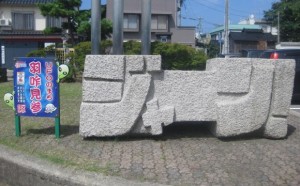
There are in fact three distinct types of onomatopoeia in the Japanese language: 擬声語 giseigo, 擬音語 giongo and 擬態語 gitaigo.
It rarely appears in beginner or intermediate textbooks, but spend a day with any native Japanese speaker and you’ll soon realise that onomatopoeia is a vital part of the language. Utterances such as, “The rain fell like ‘pssshaaaa’” and, “My heart was going ‘boom boom boom’ the whole time!” may come across as a little ineloquent when said in English, but in Japanese these kinds of mimetic words are not only considered perfectly acceptable, but pop up absolutely everywhere.
So if you’ve ever wondered what sound a Japanese pig makes, how best to describe a rolling boulder as opposed to a tiny marble, or would be perplexed if a doctor asked whether the pain you’re feeling is more shikushiku than kirikiri, now’s your chance to hone your language skills and add a few new words to your Japanese vocabulary!
JQ Magazine: Book Review – ‘Gadget Girl: The Art of Being Invisible’
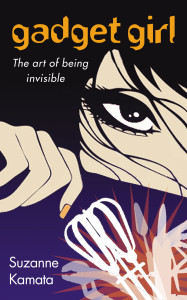
“As Gadget Girl is geared toward young adults (or more specifically, teenage girls), it is an easy read. But you get the sense that because of its diverse set of characters, it would make a good TV drama.” (GemmaMedia)
By Rashaad Jorden (Yamagata-ken, 2008-2010) for JQ magazine. Rashaad worked at four elementary schools and three junior high schools on JET, and taught a weekly conversion class in Haguro (his village) to adults. He completed the Tokyo Marathon in 2010, and was also a member of a taiko group in Haguro.
Sometimes, we’re just trying to find out where we belong.
That’s certainly the case with Aiko Cassidy, the teenage protagonist of JET Program alum Suzanne Kamata (Tokushima-ken, 1988-1990)’s latest novel, Gadget Girl: The Art of Being Invisible. The 15-year-old daughter of a renowned sculptor, Aiko wants to develop her own identity, instead of being known as Laina Cassidy’s muse and suffering from a disability (cerebral palsy). Aiko has been secretly working on manga titled Gadget Girl, and she dreams of becoming a world famous manga artist—which would enable her to visit her father in Japan.
But instead of heading to the Land of the Rising Sun, Aiko is off to France for several days, as Laina has won the grand prize at the prestigious Prix de Paris. Although she’s still receiving the “Laina Cassidy’s muse” treatment, the City of Light does open up a new world for Aiko. For one, she develops a crush on a waiter named Hervé at the café she frequents. Aiko is also introduced to the spot where he parents met but more importantly, she learns the reason why her father is absent from her life.
Inspired by the movie The Song of Bernadette, Aiko and Laina head to Lourdes, where Aiko dreams of being cured. Instead, she hears a woman whisper “Forgive,” and Aiko uses that as a call to repair broken relationships in her life.
RocketNews24: Scowling mascot brings a little fame to Japan’s least popular prefecture
Michelle Lynn Dinh (Shimane-ken, Chibu-mura, 2010–13) is an editor and writer for RocketNews24, a Japan-based site dedicated to bringing fun and quirky news from Asia to English speaking audiences.
Shimane Prefecture, ever heard of it? If your answer is a resounding “no,” you’re not alone. The oddly shaped prefecture stretching along the western coast of Japan is barely known within its own country, let alone abroad. But one disgruntled mascot is out to bring Shimane’s shortcomings to light, making fun of the prefecture’s lack of popularity and population, and giving the area a little boost in positive publicity online.
For the 95 percent of you who don’t know, Shimane is a prefecture in the Chugoku region of Japan. Its claim to fame is having the most elderly people of any other prefecture and the most centenarians. Year after year, Shimane battles it out with neighboring Tottori for the title of “least populated prefecture” and has repeatedly landed itself at the very bottom of lists ranking areas by popularity.
JQ Magazine: Book Review – ‘The Accidental Office Lady: An American Woman in Corporate Japan’
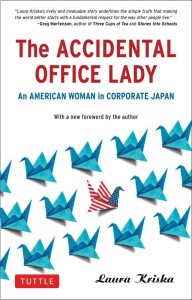
“If you are going to Japan soon, live there now, or have lived there already, this book is a survivor’s guide and tool for reflection and growth. It can help the reader better understand what to do, and what not to do.” (Tuttle)
By Lana Kitcher (Yamanashi-ken, 2010-12) for JQ magazine. Lana is the business development associate for Bridges to Japan and enjoys working as a freelance writer for a number of online publications. To read more about Lana’s adventures in Japan, visit her blog at Kitcher’s Café.
Laura Kriska’s experience as recounted in The Accidental Office Lady parallels in many ways what we as JET participants go through when we temporarily leave our lives and routines at home to pursue the “exotic” and uncertain terrain of a new culture.
Based on Kriska’s background and education, she was offered a two-year position at Honda Motor Company headquarters in Tokyo, being the first American woman to do so. She arrived in Japan equipped with her new business attire and a mind full of expectations and dreams about how the next two years of her life in Tokyo would unfold. She was soon instructed to join the secretariat—coordinating schedules and serving tea to managers in her new, polyester uniform.
Through the course of the book we get to see Kriska transform from a newly minted grad into a successful member of Japanese society. She starts out frustrated by her new environment and deeply disappointed that her job is not all that she hoped it would be. As the book progresses, you start to see that she is losing her childish tendencies to fight back, and eloquently navigating the culture with words and mannerisms instead of outbursts and small rebellions. She takes on more responsibility and in the end is able to create lasting change at Honda with a new employee manual in English and the elimination of the mandatory uniform rule.
JETwit mentioned in Japan Times article “JET Alumni: Advocates for Japan”
A great Return On JET-vestment article that ran today in the Japan Times:
JET alumni: Advocates for Japan
Program lauded for continuing to bear cultural fruit, friendships
BY AYAKO MIE
STAFF WRITER
Here’s the full article: http://www.japantimes.co.jp/news/2013/09/03/national/jet-alumni-advocates-for-japan/#.UiaU_GRATv0
Here’s the quote:
Steven Horowitz, who was a JET in Aichi Prefecture from 1992 to 1994, likened his former colleagues to a global expat community of around 60,000 people in terms of their shared affection for Japan. “I think it is going to pay . . . dividends for years and years to come,” he said.
To consolidate the alumni network, Horowitz runs JETwit.com, a website that accumulates information about alumni and Japan-related jobs.
JQ Magazine: DVD Review – ‘From Up on Poppy Hill’
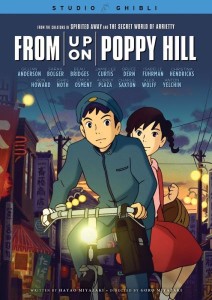
“Studio Ghibli films are known for their fantastical animation and surrealistic landscapes. However, Poppy Hill lacks one other crucial element common to Ghibili films: an emotional depth of feeling.” (GKIDS)
By Lyle Sylvander (Yokohama-shi, 2001-02) for JQ magazine. Lyle is entering a master’s program at the School of International and Public Affairs at Columbia University (MIA 2013) and has been writing for the JET Alumni Association since 2004. He is also the goalkeeper for FC Japan, a New York City-based soccer team.
From Up on Poppy Hill is the latest film to be released from Japan’s famed Studio Ghibli. Unlike its more prominent titles, this one is not directed by studio founder Hayao Miyazaki (Spirited Away, Howl’s Moving Castle) but rather by his son Goro Miyazaki. The father did, however, co-write the script (with Keiko Niwa), which was adapted from a manga published in the 1980s. Goro’s first film, Tales from Earthsea, was a commercial hit but received a very negative reception, even receiving “Worst Director” and “Worst Picture” designations from the Bunshun Raspberry Awards, given annually to the worst in cinema by the Bungeishunju Publishing Company. From Up on Poppy Hill received a much better reception (although many reviews were mixed) and became the highest grossing Japanese film of 2011 and won the 2012 Japan Academy Prize for Animation of the Year.
The story takes place in Yokohama in 1963, a pivotal point in Japan’s history as the country was preparing for the 1964 Tokyo Olympics. The nation was on the economic upswing and the Olympics were meant to showcase the “new” Japan as it pushed its postwar ruin firmly into the past. Within this context, Poppy Hill tells two stories, both of which deal with historical consciousness. The first concerns a high school student named Umi, who lives and works in her family’s boarding house. Her father was lost at sea during the Korean War and Umi flies nautical flags daily from her house in order to wish peace upon all sailors. The second story concerns a clubhouse (named the Latin Quarter), which has been slated for demolition to make way for an Olympics-related building. The building is adjacent to Umi’s high school and she meets Shun, the leader of the clubhouse, who also happens to have been decoding her nautical flags each morning. Umi leads an effort to clean up the clubhouse and soon starts to fall in love with Shun.
JQ Magazine: Film Review – ‘Cutie and the Boxer’ Pairs Sparring Partners in Life, Art

“Director Zachary Heinzerling spent five years with the Shinoharas in the making of his movie, and it has been recognized with critical praise and honors including the U.S. Documentary Directing Award at this year’s Sundance Film Festival.” (RADiUS-TWC)
By Stacy Smith (Kumamoto-ken CIR, 2000-03) for JQ magazine. Stacy is a professional Japanese writer/interpreter/translator. She starts her day by watching Fujisankei’s newscast in Japanese, and shares some of the interesting tidbits and trends together with her own observations in the periodic series WITLife.
Director Zachary Heinzerling’s debut documentary is the captivating Cutie and the Boxer, which follows two New York-based Japanese artists who have been married for over 40 years. It stars Ushio and Noriko Shinohara, a couple separated in age by two decades who have a truly unique union. They alternately bicker and support each other, but you get the sense that their respective existences are necessary for the other to survive. As wife Noriko puts it, “We are like two flowers in one pot,” meaning that when things are going well they are essential for each other’s flourishing, but when things are not they are fighting over limited space and nourishment.
Ushio (a.k.a. Gyu-chan) is an artist who was active in the avant-garde art movement, and is known for his boxing paintings and motorcycle sculptures. He achieved great fame in Tokyo before moving to New York to test his skills in the States. He was 40 at the time he met Noriko, who was 19 and had come to New York to study art. Things happened quickly between them, and soon they were married with a son, Alex. Noriko put aside her artistic aspirations to help Ushio in his career and raise Alex, thus curbing the potential for her own success.
Meanwhile, Ushio was floundering in building a name for himself as an artist in his new country. Despite the fact that he had become a father, he didn’t want to move beyond his old ways of drinking with friends and discussing philosophies regarding art. One of the most poignant and candid scenes in the film is when Ushio becomes quite drunk at one of these gatherings and emotionally describes both the pain and sublime pleasure he receives from creating art, saying that he would rather die than do anything else with this life. It is one of the film’s truly heartbreaking and inspiring moments.
JQ Magazine: Book Review — ‘Yokohama Yankee’

“Yokohama Yankee shows how the events that precede us—the social and political movements, wars, technological advances, and natural disasters—inform our attitudes and behaviors.” (Chin Music Press)
By Michael Glumac (Miyazaki-ken, 2008-09) for JQ magazine. Michael is currently enrolled as a graduate student in international affairs, and has been a music publicist and artist manager.
Pages of Leslie Helm‘s new book Yokohama Yankee seem as though they might be perfectly at place in a Dan Brown novel, and this I mean in the most complimentary manner possible.
Really.
Helm’s non-fiction account of his family’s five generations as outsiders in Japan possess none of the mixed metaphors or historical incongruence so mocked in the Da Vinci Code author’s oeuvre. Portions of Yokohama Yankee, though, where Helm explores remote regions of Japan to uncover the story of his ancestors, possess genuine intrigue surpassing any poorly imagined scuffle with murderous druids.
In an effort to learn about his German great-great-grandfather Julius’s Japanese wife (who once stopped a sword with her bare hands), Helm enlists the help of Buddhist priests to pore over a mountain village temple’s old rice paper scrolls. From the ruins of a Roman aqueduct-like bridge, Helm identifies a mysterious abandoned island off the coast of Kyushu. Here his father engaged in a post-World War II love affair with a woman who had rumored royal connections. His exploration concludes:
“On the way back to the boat we came upon a stone monument about twelve feet high that was all but hidden by shrubs. I held the branches back while the director read the inscription carved into the stone: ‘This is to memorialize the visit of his highness…of the Imperial family.’ The aquarium director looked at me with excitement.”
Feat not, the aquarium director doesn’t turn out to be working for a secret sect of Opus Dei.
CLAIR Magazine “JET Plaza” series: Marie-Claire Joyce (Nagasaki)
Each month, current and former JET participants are featured in the “JET Plaza” section of the CLAIR Forum magazine. The August 2013 edition includes an article by JET alumn Marie-Claire Joyce. Posted by Celine Castex (Chiba-ken, 2006-11), currently programme coordinator at CLAIR Tokyo.
*******
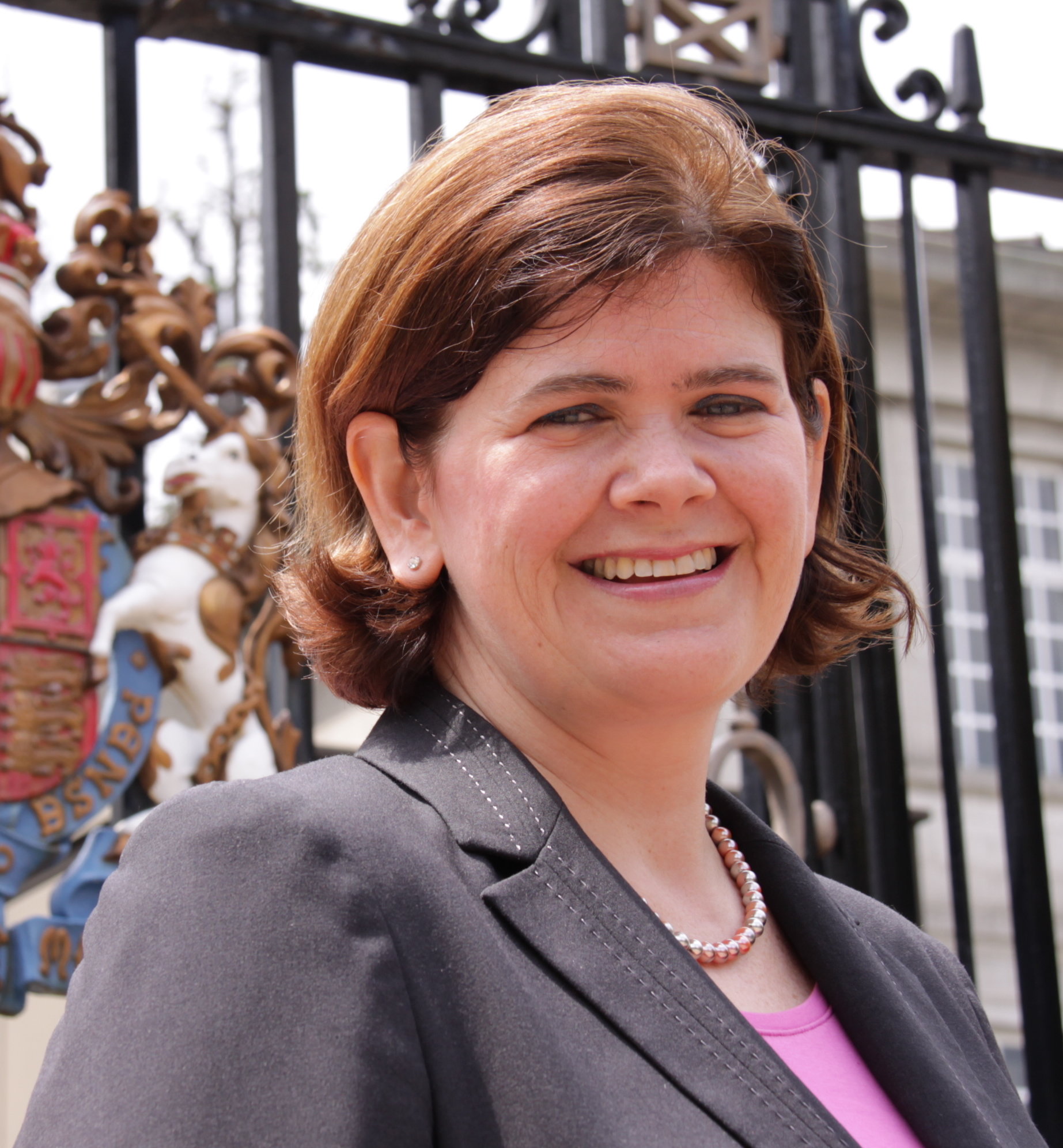
“I may never be the British Ambassador to Tokyo, but I am proud to have been the first British Ambassador to Hasami on the JET Programme”
Marie-Claire Joyce (Nagasaki-ken, Hasami-cho, 1991-93) is from Newcastle-Upon-Tyne (UK). She studied French & Italian at the University of Manchester before joining the JET Programme as an ALT in Nagasaki Prefecture. After two years, she left Japan to follow a postgraduate course in France specialising in International Trade with Asia before entering the British Foreign & Commonwealth Office. Marie-Claire has worked both in London and overseas (Tokyo, Tunis and Jakarta) on a number of areas including trade promotion, protection of British people overseas, crisis management, political and economic work. 22 years since joining the JET Programme and 15 years since her first posting to Tokyo as a diplomat, she has recently returned to the British Embassy in Tokyo where she heads up the Economic and Trade Policy Team.
Rural Diplomat
I stumbled across the JET Programme in the same way as I stumbled across what was to be my future career in the British Diplomatic Service. A friend passed me a brochure and told me I was the ideal kind of person to be on JET and then later the Foreign & Commonwealth Office (FCO) : experience travelling and living overseas, teaching experience, keen on learning foreign languages and so on. I applied for both and so the adventure began.
22 years ago this July, 29th to be exact, I boarded a JAL plane at London Heathrow bound for Tokyo, like many more JET participants will be doing this Summer. Little did I know then that it would be the first of many flights to Japan, and that Japan would become a real part of my life. I am quite sure that had I not joined JET, my life would be very different today. I was to be the very first AET at Hasami High School in the pottery town of Hasami in a beautiful rural part of Nagasaki prefecture. I had no future plans, having just graduated from Manchester University. The world was my oyster I had been an assistante d’anglais as part of my French degree and was thrilled at the idea of spending more time overseas discovering a new country through teaching.
I learned more than I bargained for. Not just a new language and culture but also about myself. Resilience, patience and determination became my best friends. I went through all the stages of culture shock : I loved Japan, I hated Japan, I couldn’t understand the Japanese, I wanted to be Japanese, I wanted to leave (and I packed several times in the first 6 months!), I wanted to spend the rest of my life in Japan. I felt excluded (I got upset being called a “gaijin”). I wrote a letter for the town newsletter to indroduce myself and tell everyone why I had come to Hasami. It was a real challenge to settle and integrate. In fact the same kind of challenge I go through in my career now as I change country every four years.
Thanks to JET alum journalist and freelance translator, Paul Benson for sharing this posting. Posted by Kim ‘Kay’ Monroe (Miyazaki-shi, 1995 -97). Click here to join the JETwit Jobs Google Group and receive job listings even sooner by email.
————————————————————————————————————
Position: SNYS English Page Editor
Posted by: New York Seikatsu Press
Type: N/A
Location: New York, NY
Salary: N/A
Start Date: N/A
Overview:
New York Seikatsu Press is looking for an English page editor. The Shukan NY Seikatsu (週刊NY生活) paper has broad readership in the United States and Japan. This position is ideal for someone interested in journalism, editing, and Japanese-English translation. The applicant must be able to commute into New York City once per week.
* Prior professional translation and journalism experience is recommended, but not required. Read More
Justin’s Japan: Nippon in New York — Karaoke Networking, Poisson Piano and ‘Cutie and the Boxer’
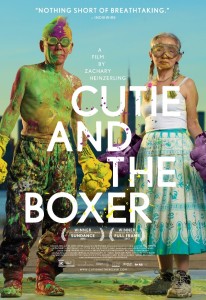
The award-winning documentary Cutie and the Boxer premieres at Lincoln Plaza Cinema and Landmark Sunshine Cinema Aug. 16. (RADiUS-TWC)
By JQ magazine editor Justin Tedaldi (CIR Kobe-shi, 2001-02) for Examiner.com. Visit his Japanese culture page here for related stories.
In the dog days of summer, it’s best to escape the heat in a place that’s cozy and cool. For those into Japanese cultural events, this month offers a diverse selection of music, film premieres and parties—all in the comfort of indoor air conditioning.
This month’s highlights include:
Thursday, Aug. 1, 7:30 p.m.
Young Professionals 2nd Annual Midsummer Matsuri and Karaoke Party
Japan Society, 333 East 47th Street
$10 for corporate and individual members, $15 for non-members
Japan Society’s Young Professionals events provide the opportunity for emerging business leaders from the U.S. and Japan (aged 25-45) to meet people with similar interests, experience programming on timely topics, and network with their peers. Attendees are invited to join for a night of networking, singing, eating and drinking featuring singer and Japanese TV personality Alex York as MC! Yukata and other summer attire are welcome, and admission includes light Japanese food and one drink ticket, cash bar thereafter. Space is limited; for advance registration email youngpro@japansociety.org or call 212-715-1219.
Saturday, Aug. 3, 7:00 p.m.
Asia Society, 725 Park Avenue
$35 members/students/seniors, $40 nonmembers
As part of the closing night presentation of the 36th Asian American International Film Festival, this screening of Our Homeland includes a Q&A with the director followed by an awards ceremony and gala reception featuring chef’s tasting tables and open bar with specialty cocktails sponsored by Rémy Martin. Sent decades ago as a child to North Korea under a repatriation program, Sungho returns to Japan for a temporary medical visit. A wrenching human drama unfolds as his family grapples with why he was ever let go. Under the constant surveillance by an accompanying North Korean official, Sungho and his family reunite again in this sensitive tale inspired by Korean-Japanese director Yang Yonghi’s true family story. Capturing the tender feelings of separation, memory, and belonging, the film also provides a rare glimpse into the life of ethnic Koreans in Japan. Presented in Japanese and Korean with English subtitles.
Friday, Aug. 16
Lincoln Plaza Cinema and Landmark Sunshine Cinema
$13, $13.50
Winner of the Directing Award for U.S. Documentary at the 2013 Sundance Film Festival and a hit at film festivals around the world, this candid New York story explores the chaotic 40-year marriage of renowned “boxing” painter Ushio Shinohara and his artist wife, Noriko. As a rowdy, confrontational young artist in Tokyo, Ushio seemed destined for fame, but met with little commercial success after he moved to New York City in 1969, seeking international recognition. When 19-year-old Noriko moved to New York to study art, she fell in love with Ushio—abandoning her education to become the wife and assistant to an unruly, husband. Over the course of their marriage, the roles have shifted. Now 80, Ushio struggles to establish his artistic legacy, while Noriko is at last being recognized for her own art—a series of drawings entitled “Cutie,” depicting her challenging past with Ushio. Spanning four decades, the film is a moving portrait of a couple wrestling with the eternal themes of sacrifice, disappointment and aging, against a background of lives dedicated to art.
For the complete story, click here.
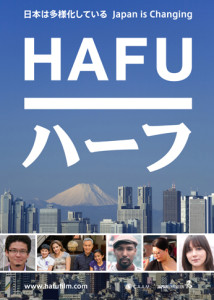
Hafu: The Mixed-Race Experience in Japan premieres in New York July 28. For more information, click here.
By Stacy Smith (Kumamoto-ken CIR, 2000-03) for JQ magazine. Stacy is a professional Japanese writer/interpreter/translator. She starts her day by watching Fujisankei’s newscast in Japanese, and shares some of the interesting tidbits and trends together with her own observations in the periodic series WITLife.
This weekend the annual Asian American International Film Festival will screen the new documentary Hafu: The Mixed-Race Experience in Japan (the title being the Romanization of “half” in Japanese), made by filmmakers Megumi Nishikura and Lara Perez Takagi and. Both half Japanese themselves, these women were inspired to undertake this project due to the lack of media attention on hafus and frustration with the shallow adoration of hafu celebrities on Japanese television.
The film begins with some informative statistics, such as that 2% of Japan’s population is foreign born and a striking 1 out of 49 babies is born to a family with a non-Japanese parent. These numbers have grown greatly over the last 30 years, and yet Japan is still lacking in its understanding of this diverse populace. Hafu features five half Japanese subjects, and their struggles and successes living in Japan today.
One of the families profiled is comprised of a Japanese father and a Mexican mother, who met while studying abroad in the U.S. They later married and now live in Nagoya with their two children. The older one, nine-year-old Alex, is having a hard time at his local school as the other kids tease him for being “English.” Alex’s parents believe that he needs a change in environment and decide to transfer him to an international school. He asks to spend some time in Mexico before the transition, and comes back from this trip brimming with confidence and an easing of the stutter that plagued him when he was being bullied (which his teachers had turned a blind eye to). Alex goes on to love his new school, make friends, and feel comfortable in his own skin without having to worry about being hafu.
JQ Magazine: Citizens of the Bay Area, Film Buffs, and Lovers of All Things Japanese, Lend Me Your Ears!

Catch the U.S. premiere of Evangelion 3.0: You Can (Not) Redo as part of NEW PEOPLE’s fifth annual J-POP Summit beginning July 27. (© khara. Licensed by FUNimation Productions, Ltd. All Rights Reserved.)
By Preston Hatfield (Yamanashi-ken, 2009-10) for JQ magazine. Preston received a BA in English literature with an emphasis in creative writing and a minor in Japanese at the University of California, Davis. After spending an amazing year on JET in Yamanashi, he spent a year writing and interning with book publishing companies in New York. He currently lives in Marin County, where he continues to cover local Japan-related stories for JQ, and teaches English as a second language at an international school in San Francisco.
Mark your calendars for the weekend of July 27 when NEW PEOPLE and the San Francisco Japantown Merchants Association kick off the fifth annual J-POP Summit. With a special thematic focus on the kawaii phenomenon, this extravaganza promises to be bigger and better than the last one (not unlike the stages of an RPG boss fight).
“Each year we strive to present a comprehensive cross-section of the latest in hot J-POP trends across fashion, film, art, music, anime/manga and pop culture that are happening in Japan NOW!” says event publicist Erik Jansen, who has been promoting the event since the beginning.
The weekend at NEW PEOPLE and Union Square promises a spectacular showcase of live music. In addition to performances by iconic pop star Kyary Pamyu Pamyu and LoVendoR, the new band featuring former Morning Musume star Reina Tanaka, you’ll also have the chance to hear Kylee, an American-born teenage singer whose stock has been rising steadily in the pop music scene. In case you’re worried if all that cutesy music is going to turn your brain to pudding, rest assured that a punk rock show by the Akabane Vulgars and Daichi’s beat boxing and vocal mix mastery will sculpt it back to its normal Jell-O consistency.
And if music isn’t your thing? “We always receive a wide variety of attendees, from ages 7 to 75 and from across all walks of life,” Jansen promises, and this year there will also be an array of other events, including a Harajuku-inspired fashion show, a Pop Gourmet food festival, a sake tasting hosted by the Japanese Consul General of San Francisco, a rebooted edition of the Real Escape Game, the Vocaloid Dance Contest and a full lineup of special guests including guest of honor Katsuya Terada, one of Japan’s greatest illustrators, who will be doing freehand drawings and signing autographs to promote his new art book at the Kinokuniya bookstore.
Justin’s Japan: Japan Society Serves Up Summer Film Festival
By JQ magazine editor Justin Tedaldi (CIR Kobe-shi, 2001-02) for Shukan NY Seikatsu. Visit his Examiner.com Japanese culture page here for related stories.
Summer’s here, and that means a new season of JAPAN CUTS: The New York Festival of Contemporary Japanese Cinema, running at Japan Society from July 11-21.
Now in its seventh year, JAPAN CUTS offers 25 titles, all of which are a mix of New York, U.S. and International premieres. Highlights include the smash-hit samurai blockbuster Rurouni Kenshin, the multi-Japan Academy Prize-winning The Kirishima Thing, and the latest horror film from Takashi Miike, Lesson of the Evil.
“In contrast with the past few years, the selection of titles for JAPAN CUTS is much leaner, and more focused on art house productions and film oddities, though there is still a number of ‘mainstream’ crowd-pleasers in the lineup,” says Japan Society’s chief film programmer Samuel Jamier. “Rather than a ‘best-of’ list, this year’s crop brings a block of dark matter, and provides an unblinking look at the dark side of Japan.”
Co-presented with the New York Asian Film Festival (which itself is now in its 12th year), JAPAN CUTS has attracted over 30,000 filmgoers and presented over 150 feature films—many never before seen in the U.S.—as well as a number of panels, post-screening parties, and exclusive Q&As with filmmakers and actors. Past guests have included Koji Yakusho, Masami Nagasawa, and Sora Aoi.
For a complete listing of films and appearances, visit www.japansociety.org/japan-cuts-2013.

